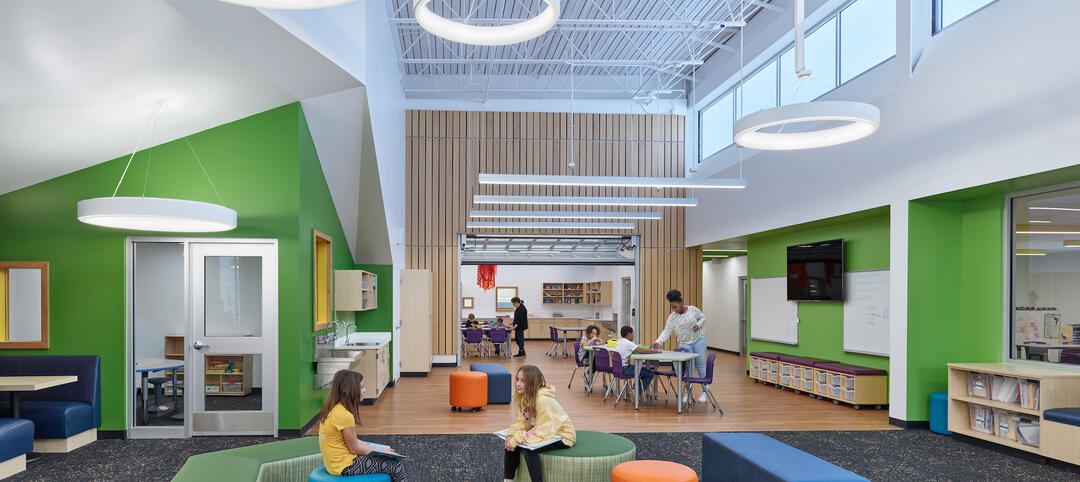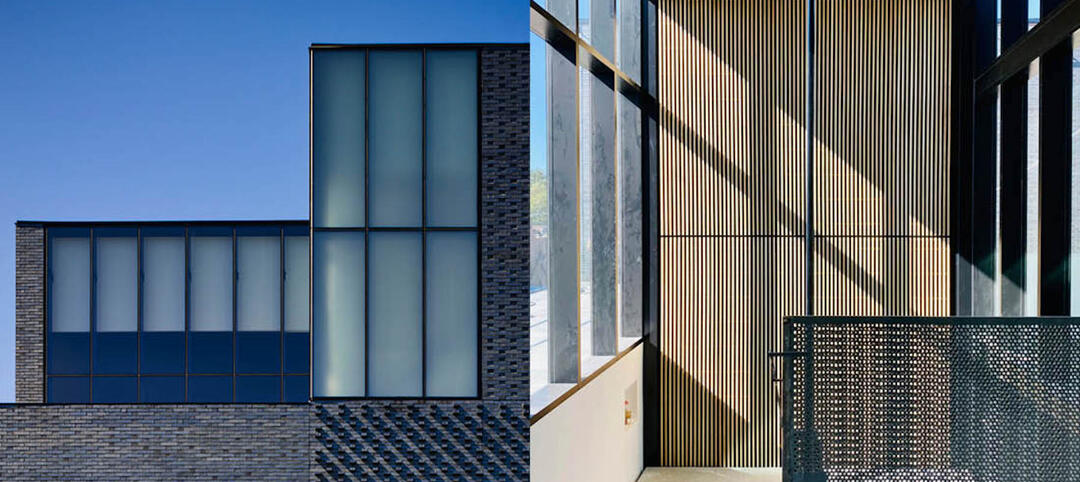While increasing numbers of building projects are now being designed with building information modeling, very few property owners are retroactively applying BIM to their existing buildings.
But that may slowly start to change as a noteworthy initiative on the part of Ohio State University Medical Center to fully convert its 55 Medical Center buildings from AutoCAD to BIM gains attention.
With a deadline set for late summer, the Medical Center is well on the way to its ultimate goal to improve its quality and speed of decision making as it relates to facility use, renovations, maintenance, wayfinding, and energy use. However, the Medical Center has already begun benefitting from their newly converted models.
“We started using the BIM models much quicker than we expected,” said Joe Porostosky, the Medical Center’s manager of facilities information and technology services. “For example, we’re currently renovating our emergency room, and we were able to produce very high-quality renderings and a video walkthrough to show senior leaders some different design possibilities.”
In another instance, the hospital had to decide where to construct a new donor sign. Because the exterior of that particular building had already been modeled, the BIM team could easily present several rendered options of where the sign could be placed. “Our staff was just amazed at how quickly we could move the sign around and show them what that space would look like,” said Porostosky.
INCUBATING THE BIM CONCEPT
The seeds for the BIM conversion idea were first planted in 2008, when Porostosky decided to take a closer look at how the Medical Center was managing its floor plans and what kinds of technology were available. Realizing that Ohio State had access to a lot of Autodesk software at a discounted rate, Porostosky began mulling over the idea of using BIM.
Then, in 2010, he met Brian Skripac, the BIM director at Columbus-based architecture firm DesignGroup, and the two began to formulate a plan. Porostosky also consulted with Western Michigan University for advice, as that institution was going through a similar conversion project, although at a smaller scale.
Once the funding was pulled together and an official process was mapped out, the project officially kicked off in the spring of 2011. Five students were trained in Revit and began the conversion of the AutoCAD drawings, covering 5.7 million sf of building property.
In addition to tracing the original drawings, the conversion team is incorporating an additional level of detail into the Revit models, including exteriors, roofs, and window placement, height and volume, ceilings and floors, and GIS location data.
The emerging BIM models are chalking up some interesting possibilities. For instance, with energy modeling and building performance capabilities, the Medical Center will be able to decided more effectively where and how to upgrade different buildings on a limited budget while complying with the university’s requirement that all renovations attempt to achieve at least LEED Silver.
“The energy analysis aspect of this project is something that’s pretty exciting and is really one of the most important aspects of the project,” says Skripac.
As for operations, the Medical Center is looking at ways in which it can use the BIM models to set up maintenance schedules for items like carpet, tile, and finishes. The team would also like to take equipment-heavy spaces and laser scan the machinery to build into the model so that the engineers know exactly what the mechanical room looks like and can more easily expand the systems as needed.
“The more we get into it, the more we’re finding other values: Now that we have all this data, what can we do with it? For example, how can we improve our wayfinding using BIM?” asked Porostosky. With 34% of the Medical Center’s 1.8 million annual visitors requiring wayfinding help, Porostosky envisions his team can eventually using the Revit models to create video renderings, analyze hallway widths, and identify congestion points.
UNLOCKING THE POTENTIAL OF BIM
Porostosky sees BIM’s huge potential application in the realm of ongoing building operations. Once the Medical Center completes its conversion to BIM, he believes there may even be the opportunity to roll it out across Ohio State’s portfolio of more than 750 buildings.
Skripac sees the higher education and healthcare markets as the most ideal candidates for BIM conversions due to their longer life cycles and the constant space use changes that occur within them. He points out that “often reimbursement opportunities and grant research funding are tied into having up-to-date tracking information and data in terms of how the spaces are specifically being used, and BIM is a great way to accomplish that.” BD+C
Related Stories
| Sep 2, 2022
Converting office buildings to apartments is cheaper, greener than building new
Converting office buildings to apartments is cheaper and greener than tearing down old office properties and building new residential buildings.
| Sep 2, 2022
New UMass Medical School building enables expanded medical class sizes, research labs
A new nine-story, 350,000 sf biomedical research and education facility under construction at the University of Massachusetts Chan Medical School in Worcester, Mass., will accommodate larger class sizes and extensive lab space.
Architects | Sep 1, 2022
BNIM promotes Jeremy Knoll to Director of Sustainability and Regenerative Design
BNIM'S Jeremy Knoll promoted to Director of Sustainability and Regenerative Design.
Giants 400 | Sep 1, 2022
Top 160 K-12 School Architecture + AE Firms for 2022
PBK, DLR Group, Huckabee, and Stantec head the ranking of the nation's largest K-12 school sector architecture and architecture/engineering (AE) firms for 2022, as reported in Building Design+Construction's 2022 Giants 400 Report.
| Sep 1, 2022
ABC: Nonresidential Construction Spending Increases by a Modest 0.8% in July
National nonresidential construction spending increased 0.8% in July, according to an Associated Builders and Contractors analysis of data published today by the U.S. Census Bureau.
| Sep 1, 2022
The University of Iowa opens the new Stanley Museum of Art, a public museum for both discovering and teaching art
The University of Iowa recently completed its new Stanley Museum of Art, a public teaching museum designed by BNIM.
| Aug 31, 2022
A mixed-use development in Salt Lake City provides 126 micro units with mountain views
In Salt Lake City, a new 130,000-square-foot development called Mya and The Shop SLC, designed by EskewDumezRipple, combines housing with coworking space, retail, and amenities, as well as a landscaped exterior for both residents and the public.
Mass Timber | Aug 30, 2022
Mass timber construction in 2022: From fringe to mainstream
Two Timberlab executives discuss the market for mass timber construction and their company's marketing and manufacturing strategies. Sam Dicke, Business Development Manager, and Erica Spiritos, Director of Preconstruction, Timberlab, speak with BD+C's John Caulfield.
Giants 400 | Aug 29, 2022
Top 80 Senior Living Facility Architecture + AE Firms for 2022
Perkins Eastman, Hord Coplan Macht, Ryan A+E, and Stantec top the ranking of the nation's largest senior living facility architecture and architecture/engineering (AE) firms for 2022, as reported in Building Design+Construction's 2022 Giants 400 Report.
Giants 400 | Aug 29, 2022
Top 70 Student Housing Facility Architecture + AE Firms for 2022
Niles Bolton Associates, Mithun, Gensler, and Perkins and Will top the ranking of the nation's largest student housing facility architecture and architecture/engineering (AE) firms for 2022, as reported in Building Design+Construction's 2022 Giants 400 Report.

















